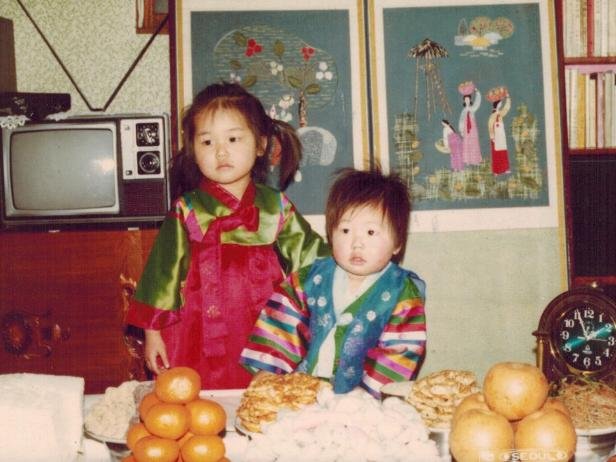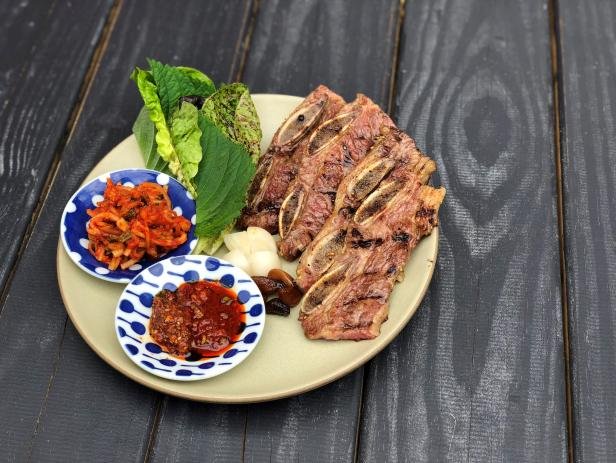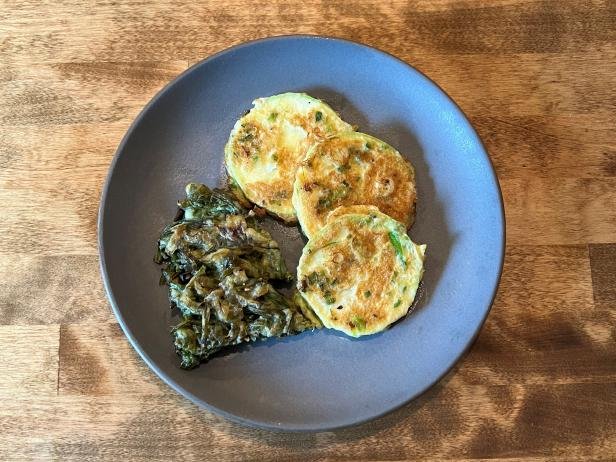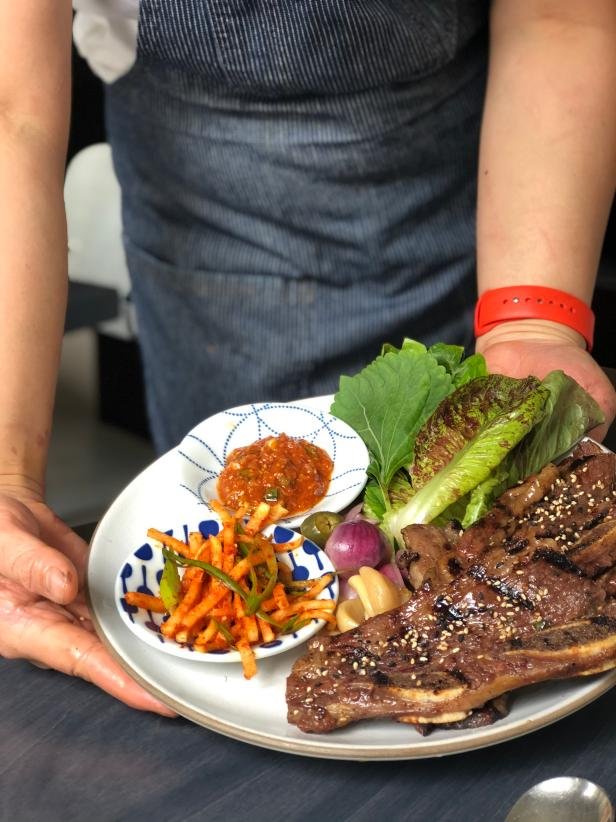My Chuseok Menu Brings a Taste of Korea to Michigan

I remember my youngest uncle holding a big sickle. With its huge curved blade, he pried open the spiky outer husk of a chestnut, peeled the hard brown shell and carefully removed the thin parchment-like inner layer. Then he handed me the fresh, ripe chestnut and I eagerly bit into it, marveling at its resemblance to a tiny brain and savoring the sweet flavor.
That first chestnut is one of my favorite Chuseok memories. A Korean national holiday, Chuseok is a three-day-long celebration of the harvest moon and falls right in the middle of the autumn harvest. Families get together and honor their ancestors with food and drink offerings at home (pictured above), or at the ancestral graves in a ceremony called seongmyo. The latter is where my uncle gave me my first taste of freshly fallen chestnuts. The whole extended family on my mother’s side had gathered around the mountainside burial grounds to remove weeds and cut grass, another tradition known as beolcho. Not only did we not own a lawn mower, but the rolling hills and winding paths would’ve made using one impossible, so my uncles did the work by hand with sickles (which also came in handy if we encountered any chestnuts).

I always looked forward to our lunch break, when the women in the family would bring out an array of doshirak happan (stacked lunch boxes with multiple layers). My mother’s stack was five boxes high, and as she opened each layer, all of my favorite Chuseok foods would be revealed: the usual suspects of jeon (savory egg-battered vegetables or pancakes) and japchae (sweet potato noodles with julienned beef and vegetables); a colorful layer of namul, the seasoned vegetable dishes; an obligatory layer of rice; and best of all, neobiani (marinated beef steak). My mother only prepared neobiani for the most important holidays (she didn’t even make it for my birthday!). Later I learned the dish is an older form of the more well-known Korean barbecue meats bulgogi and galbi, as well as a regional specialty in my mother’s home province, Gyeonggi-do. I’d start with our doshirak, then taste this auntie’s and that auntie’s food, secretly agreeing with my mother that she was indeed the best cook in the family.

As I dug deeper into the history and traditions of Korean cuisine for my restaurant Miss Kim in Ann Arbor, I learned that Chuseok in many ways is a women’s holiday. The first documented mention of Chuseok celebrations dates back to the reign of King Yuri during the Silla dynasty, when he hosted a friendly competition amongst women in the capital. Two teams of women weaved for a month leading up to Chuseok, then their work was judged and a winner declared. Everyone celebrated the winning team with food and drinks, and with song and dance.
Later, Chuseok was known to be one of the only days of the year that married daughters could visit their parents. Under the patriarchal family system, a married woman was officially considered a member of her husband’s family, not the family she was born into. It was not customary for married women to visit their birth families very often, but on Chuseok, moms and daughters were able to meet. In light of this knowledge, the time I’ve spent with my mother’s side of the family during Chuseok feels even more precious, and my fondest memories of the holiday are of them and our big picnics with jeon and neobiani.

Even though I now live alone in Michigan, far away from my extended family in Korea and even my immediate family of my mother and my brother’s family in New Jersey, I still celebrate Chuseok — just in my own way. Using local ingredients, I whip up a few different types of jeon, make some japchae and of course grill some neobiani in a true amalgamation of Korea, America and Michigan.